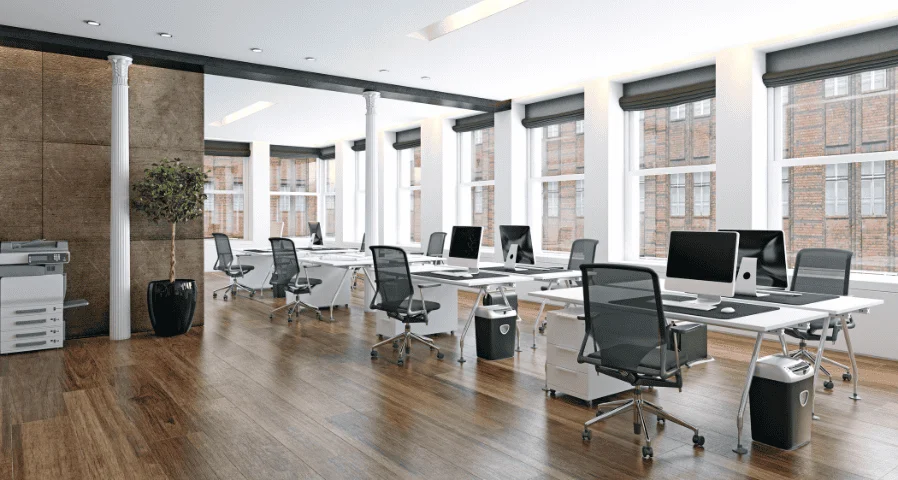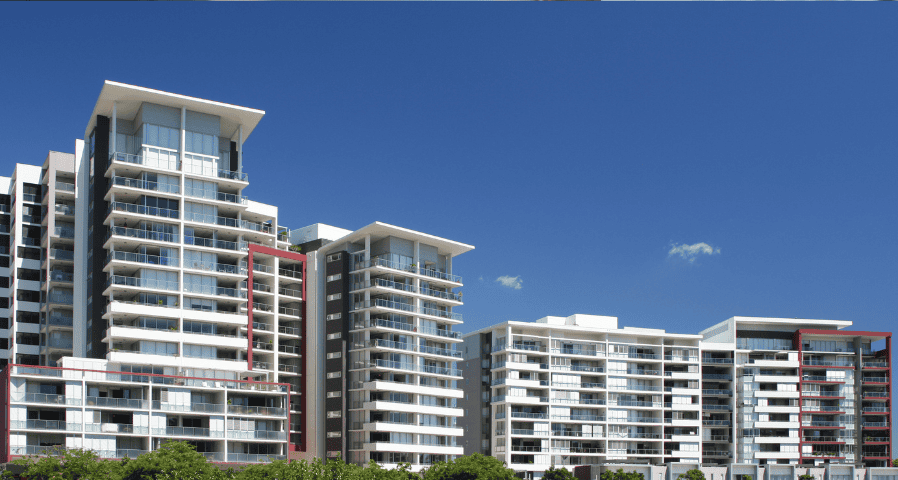An In-depth Look at Commercial LED Retrofits
What Does our Turn-Key Commercial LED Retrofit Entail?
At Action Services Group, our turn-key commercial LED retrofit process is designed to simplify complex projects and deliver measurable results in energy savings, lighting performance, and operational efficiency. From the first walkthrough to post-installation rebate recovery, every step is handled by experienced professionals focused on your goals.
Facility Survey
Each project begins with a detailed facility survey. Our team collaborates with you to review current lighting systems, hours of operation, and maintenance challenges. This hands-on assessment allows us to identify opportunities for cost reduction, energy efficiency, and performance improvement.
LED Product Selection and ROI Analysis
Based on your organization’s priorities, whether that’s maximizing energy savings, reducing maintenance, or improving light quality, we recommend the ideal LED solutions for your facility. We also provide a custom ROI analysis that outlines projected savings, available utility rebates, and financing options to ensure every upgrade meets your budget and performance goals.
Installation and Project Management
Once the proposal is approved, our project management team oversees every phase of implementation. Certified technicians perform a detailed site verification, finalize product selections, and coordinate installation scheduling to minimize disruption. Throughout the process, you receive transparent updates and ongoing communication for a seamless project experience.
Rebates and Incentives
Rebate recovery is built into every retrofit we manage. With thousands of incentive programs available nationwide, our team handles all rebate research, documentation, and submissions, ensuring you maximize savings while staying fully compliant with utility and program requirements.

Learn more about our affiliated companies offering Lighting Products and Incentive & Rebate Recovery Services.
Finding the Right LED Solution for Your Organization
Selecting the ideal LED retrofit solution can be a complex process. With thousands of options available in the LED industry, not every product delivers the same level of efficiency, performance, or long-term value. Without a clear understanding of product specifications, it’s easy to choose a fixture that performs well but fails to deliver the energy savings your organization expects.
That’s why Action Services Group takes a strategic, data-driven approach to LED selection. We help you make informed decisions based on your goals, evaluating each project through three key savings criteria: Energy, Performance, and Maintenance, to ensure your upgrade meets both your operational and financial objectives.

Once your project goals are defined, Action Services Group, a fully product-neutral provider, procures the LED solutions best aligned with your objectives. Our independence allows us to source from multiple manufacturers, ensuring you receive products that deliver maximum savings, performance, and reliability based on your specific facility needs.
LED Light Performance
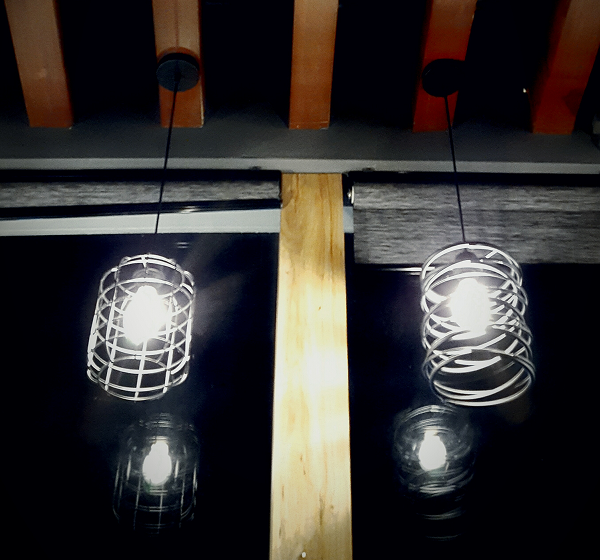
How are LED’s Different from Other Light Sources?
Reference data provided by energy.gov.
Light Source: LEDs are the size of a speck of pepper, and a mix of red, green, and blue LEDs is typically used to make white light.
Direction: LEDs emit light in a specific direction, reducing the need for reflectors and diffusers that can trap light. This feature makes LEDs more efficient for many uses such as recessed downlights and task lighting. With other types of lighting, more than half of the light may never leave the fixture, due to the light reflection.
Heat: LEDs emit very little heat. In comparison, incandescent bulbs release 90% of their energy as heat and CFLs release about 80% of their energy as heat.
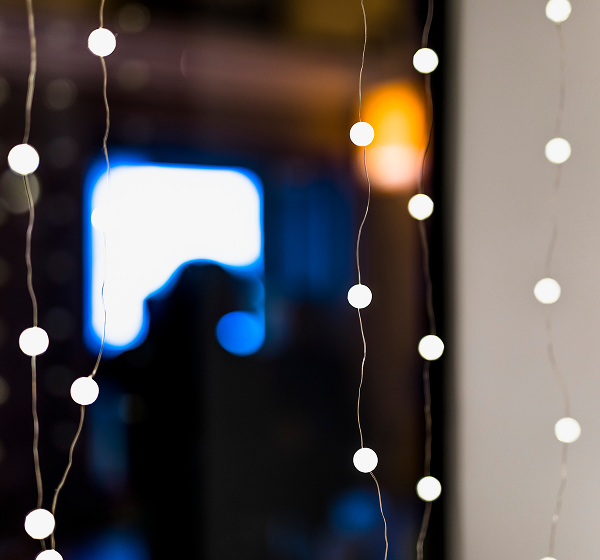
LED Monochromatic Light
First, unlike incandescent lamps and other light sources, LED’s are not inherently a white light source. LED’s instead, emit monochromatic light.
For this reason, LED’s are the most efficient colored light application for things like traffic lights, exit, and emergency signs. LED’s need to produce white light when being utilized as a general light source.
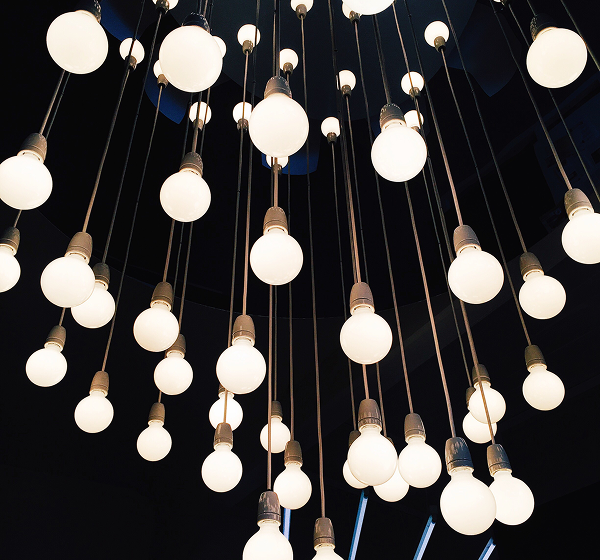
LED’s and White Light
LED’s achieve white light in three ways.
- Phosphor conversion is when a phosphor is utilized on or near the LED to convert the colored light to white light
- RGB systems, in which light from multiple monochromatic LEDs (e.g., red, green, and blue) is mixed, resulting in white light
- A hybrid method, which uses both phosphor-converted (PC) and monochromatic LEDs.
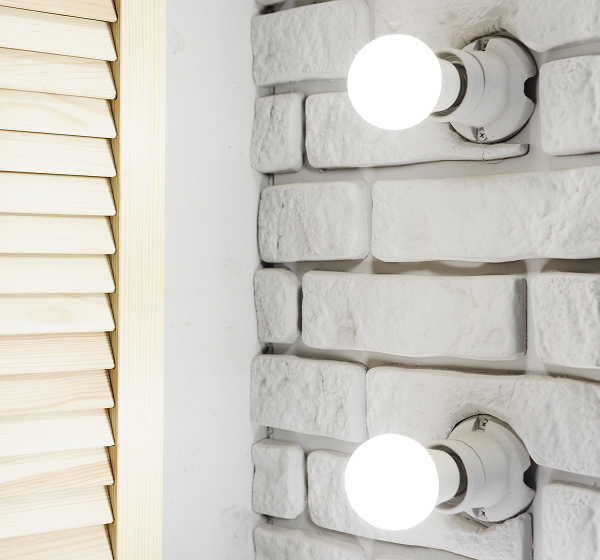
LED and Natural Light
For example, we create white light by blending the full-color spectrum. While LED’s usually combine Red, Green, and blue (RGB) LED’s to create white light.
Their CRI rating averages 90+, producing very close proximity to full natural light.
Indoor and Outdoor Commercial LED Applications
Due to the LED’s rugged construction and a wide range of shapes and sizes, it is one of the only lamp selections optimal for both indoor and outdoor use.
Outdoor Commercial LED Retrofit Benefits
Durability
LED’s, unlike other lamps, are not made from glass. Other bulbs are susceptible to extreme weather conditions such as cold, wet, and hot. As a rule, the LED is impervious to the elements, making it perfect for outdoor lighting.
Directional
Unlike other light sources that emit light in all directions, LED’s are designed to shine in a specific direction. In comparison, this option makes the LED perfect for spotlights and outdoor signage illumination.
Brightness
The LED lamp produces a pure, white light, making it seem brighter. As a result, this can be especially useful for locations such as parking lots and garages. In this instance, the level of lighting could increase or decrease your customer traffic and their feelings of safety.
Along with the outdoor benefits, come the overall benefits of a longer-lasting, energy-efficient, recyclable lamp.
Indoor Commercial LED Retrofit Benefits
Dimmable
LED’s are a great way to control the atmospheric lighting in your business. Also, with the addition of dimmer switches, you can easily set the right mood for any occasion. While other lamps are dimmable, the LED has the most versatile dimmability of any light.
NO UV
Incandescent and CFL lamps produce a high amount of UV rays. While usually not an issue, if you happen to have them in the kitchen of a restaurant or the produce or meat aisle of a supermarket, these emissions could accelerate spoilage. The LED, on the other hand, produces NO UV emissions.
Directional
Unlike other light sources that emit light in all directions, LED’s can be designed to shine in a specific direction. This option makes the LED perfect for retail displays and highlighting particular areas.
No Noise
Depending on the environment, you may want to consider the LED due to noise. If you have ever heard a fluorescent light, you will know they can be quite noisy. The LED is ultra-quiet, producing no noise level at all. Along with these Indoor benefits come the overall benefits of a longer-lasting, energy-efficient, recyclable lamp.
Lighting and Commercial LED Retrofit Product Education
By the way, for an in-depth look at individual lighting applications visit our Lighting and LED Product Education Center. As an example, you will learn their energy usage, maintenance costs, and lighting performance, along with the benefits of retrofitting to LED.
LED Energy Savings
LED Energy-Efficiency
We are sure you have heard about the energy efficiency of LED lamps. In particular, most don’t know why they are more efficient than incandescent and other forms of lighting. The main reason LEDs use less electricity is that they don’t produce light in the same way. The incandescent lamp produces light by passing power through a filament until it reaches a temperature that produces light. Most incandescent bulbs waste 90% of the electricity they consume as heat.
LED Produced Light
The LED produces light using a process called electroluminescence. This process does not heat a filament, so the process creates little heat that translates to wasted energy in other lamps. The LED relies on semiconductors to generate light, making it far more efficient at converting electricity to light than other sources.
The First LED
The first LED was invented by Nick HolonyakJR. in 1962 while working for GE. Since then, LED technology has rapidly advanced to become the most energy-efficient solution on the market today. According to energy.gov, between 2011 and 2012, global sales of LED replacement bulbs increased by 22 percent, while the cost of a 60-watt equivalent LED lamp fell by nearly 40 percent. By 2030, LEDs will account for 75 percent of all lighting sales.
LED Maintenance Savings

Understanding LED Life Expectancy
Likewise, when considering LED Retrofit maintenance costs, the first step is understanding the life expectancy of your LED lamps. Unlike other bulbs, which judge life expectancy by utilizing the Average Rated Life (ARL), which measures how long it takes half the lamps in a batch to fail. You weigh an LED’s lifespan in lumen maintenance. Lumen maintenance is an approach to measuring the light output of a brand-new light source. You then, over time, compare the lifespan with its light output.

Average Rated Life (ARL) Example
You test a batch of 100 lamps. At 1000 hours, 50 of the bulbs have failed, giving the batch an ARI of 1000. Some of the lights may have failed at earlier times, but 50% failed within 1000 hours.

Lumen Maintenance Example
L70 and L50 are examples of lumen maintenance. Specifically, L70benchmarks when a lamp or fixture has 70% light output remaining.
Read our Understanding LED Lifespan blog for a more in-depth understanding.

Reviewing the LED Life Expectancy Chart
As you can see, the lifespan of an LED greatly surpasses most other lighting options. This simple fact dramatically reduces the expected maintenance costs of a LEDRetrofit, given just the lifespan of the lamp.
There are a few other maintenance considerations to take into account if you want your LED’s to reach the desired lifespan.

Do Your Research and Choose the Appropriate LED’s
The average consumer is not going to be able to tell the difference between LED manufacturers and product lines. Not all LED’s are made equal. Our first suggestion is to partner with a LED Retrofit company. Now obviously we would suggest ourselves! As a National Lighting, Signage, and Electrical Service Provider, Action Services Group is uniquely qualified to combine services and offer you a one-stop-shop for all your lighting, signage, and electrical needs. But in the end, even if you decide to go with another organization, make sure they are manufacture and product-neutral. This will to make sure you get the best product for your organization and not the best product for them.

Clean Your LED’s Regularly
Like all lighting applications, LED’s need to be cleaned regularly. Traditional lighting often needs to be re-lamped, which is not usually the case for LED’s. Due to their long life and lack of re-lamping, LED’s need to be cleaned, inside and out, to reduce dust and debris that could cause buildup and eventual shortage. We also suggest cleaning around the units to cut down on the potential dust that could migrate.

Perform Inspections
Like all lighting applications, we suggest routine inspections. To ensure everything is working correctly and to catch potential problems early. With this in mind, your LED’s need an occasional review.
Check for weak points that could be impeding efficiency and make sure all parts associated with your LED are clean and without blemishes and discoloration.
Understanding the LED Warranty
As a rule, most LED lamps come with a basic warranty. Unfortunately, there are a few misconceptions when it comes to what your warranty covers. Generally, one of the primary frustrations we hear the most about all relate to this topic. So, what are you looking at for a standard LED warranty?
LED Warrant Time Frame
To begin with, most standard LED Warranties last from three to five years. As a reminder, they will only cover the cost of replacing the product. Don’t stop reading now, just because you think your LED’s will far outlast typical warranties. Conversely, depending upon the location and usage they might not. Let’s look at a specific example.
LED Warrant Time Frame Example
You purchased new High Bay LED lighting for your warehouse. The lamps carry a three-year warranty and an L70 rating of 25,000 hours. Your warehouse operates the illumination for 20 hours per day, 365 days per year. With this type of schedule, your annual burn time will be 7,300. Your High Bay LED’s will be at the L70 threshold around a quarter of the way through your fourth year. Putting you about 3-4 months outside of your warranty.
Unexpected LED Warranty Misshapes
So, let’s say your LED lamp hits its L70 mark and you’re still under warranty. You do a little happy dance, knowing you can claim your warranty. Not so fast! Most manufacturers will want to make sure the product installation was done by a professional. They are looking for user error. Unfortunately, most times, early burnout is caused by bad electrical wiring or improper installation. We cannot stress enough the need to vet your LED lighting specialist. It is also critical that you discuss your warranty with your LED lighting specialist. Make sure to ask the right questions.
- How Long is your warranty period?
- Is labor covered?
- Does an improper installation void the warranty?
- Component coverage?
Understanding LED Rebates and Incentives
First off, an LED Rebate or Incentive can significantly change your rate of ROI. The LED rebate or incentives process is a significant source of inquiry within the LED Retrofit industry. There is no easy answer to give when people ask how much of a rebate or incentive they are going to get. The main reason being, LED rebates and incentives are offered mainly by state and utility provider. So, a rebate or incentive for PA could be significantly higher or lower than one for TX. Keep in mind this is for the same project and scope. But the good thing is, with many LED solutions offering better energy savings, utility companies are adding new rebate and incentive programs consistently.
What Doe’s a Utility LED Rebate or Incentive Entail?
Secondly, while each utility program is different, the majority follow the same basic set of steps.
- Check with your utility provider to determine if they are offering a LED lighting rebate or incentive program.
- After determining your project eligibility, submit your lighting application.
- The utility company will review your application and, in most cases, pre-approve your potential rebate or incentive.
- Complete your lighting project.
- Your utility company will verify the installation and process your rebate or incentives check.
Steps to a Utility LED Rebate or Incentive
The necessary steps for rebates and incentives are generally the same. I know we made this sound easy. Unfortunately, there are many intricacies behind the information the utility companies need to get you pre-approved. We suggest that you verify with your LED retrofit company that they assist in the rebate and incentive process. At Action Services Group, we manage your rebates and incentives from start to finish. We make sure you receive the maximum rebate and incentive.
Want a closer look at rebates and incentives? Check out our blog, What to Know About Lighting Rebates and Incentives.
Consider a National Turn-Key Retrofit Lighting Company
Commercial Lighting Services Provider Review
As a recommendation, if moving to a commercial lighting service provider, consider partnering with a service management provider. They can supply a national LED lighting and electrical maintenance program. As a reminder, review these items when vetting a national LED lighting, electrical, and signage service provider.
- Available Resources
- Available Personnel
- Reporting Capabilities
- Data Capturing for lighting and signage components
- Lighting Recommendations
- Product Neutral

Interested in Learning More?
The first step in any LED lighting project should be to contact a lighting solutions provider or lighting company that is manufacturer and product-neutral. With neutrality comes a higher focus on your needs as opposed to the desire or limitation of selling a specific product.
A LED Retrofit provider should ask you about your project.
- What are your desired results?
- Are you looking at budget or project completion constraints?
- Do you have an energy reduction target?
- What lighting performance specifics do we need to consider?
At Action Services Group, our business model is designed to offer you;
- maximum ROI
- lighting performance
- maintenance cost
- energy efficiency
Remember, no solution or product is ever a one size fits all. We understand the need to customize solutions to meet the organization.

